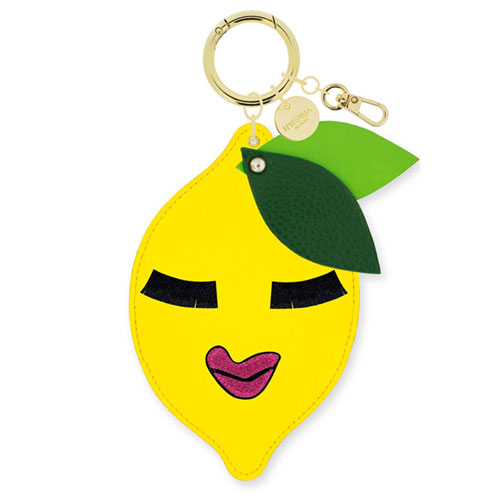

We can’t keep it to ourselves any longer, on occasion for the next Packaging Innovations show in 2017, we have started a series of interviews with reknown exhibitors who will keep you updated about the most important themes and trends of the industry. Stephan Bestehorn, Managing Editor of the rlc Group and very first dialogue partner of 5 ½ questions, looks ahead and describes the future of packaging.
TL&L: How would you describe your company in three words?
StB: Innovative. Passionate. Customer-oriented.
TL&L: Or in other words... are you plotters-and-printers or InDesign-and-Photoshop?
StB: Both! For the perfectly produced product, you need knowledge in design, but you also need implementation competence ... This is completely in line with our way of thinking: we’re constantly questioning design, technology and processes in order to make packaging ever better – without forgetting where we came from. You can have the fastest and fanciest car, but it’s got no value if you don't know how to drive it! So, with us, you'll find InDesign, Photoshop, plotters and printers - as well as the people who know how to use it all in concert.
TL&L: The theme of the next Packaging Innovations is ‘design meets technology’. Which of the innovations of the recent past would you rather not do without?
StB: Oh, the ‘swipe’ - on a smartphone, tablet or notebook. With one small motion you reveal, delete or link data. This simple hand movement, made possible through innovative technology, has greatly simplified life and established itself permanently in our daily routines.
But if you ask me what I think was revolutionary in the packaging and printing industry: I remember the first Macintosh Classic that my brother – also a Managing Director of the rlc | packaging group – bought for our pre-press about 25 years ago. While the ‘digital natives’ generation has grown up with the finger swipe, at that time we had to learn how to use the mouse for creative purposes. The Macintosh was a real milestone for our pre-press, and it replaced classic film production because "a film belongs at the movies!" That's what the marketing campaign was called that ushered in a new era of print preparation. Now our Macintosh just sits on the shelf, but we remember it fondly as a symbol for the first step towards digitisation.
Increasingly, the innovations of the recent past are to be found in efficient inline production. Today, more and more effects can be produced cheaply inline.
TL&L: What technologies does your company insist on? How do design and technology complement each other?
StB: Our aim is to find the most efficient way forward for packaging. We do this based on our lean philosophy, which also means that we utilise new digital options throughout the entire value chain. Direct, flexible and creative! This means things like computer-aided design, digital visualisations or mock-ups, virtual 3D shelf simulations or the networking of packaging with the digital world through NFC tags or printed electronics.
A recent example of how technology and design complement each other can be seen in our our 'Lumen' concept study, an innovative packaging concept that combines glow-in-the-dark with special designs for producing eye-catching effects. As a highlight, printed electronics enhance special shapes and colours or individual details of various kinds of packaging. Different switching mechanisms set the light function to activate directly at the point of sale or later, when the packaging is opened – whichever is needed. The benefits: In contrast to lighting solutions, the individual components don't have to be manually integrated into the packaging in advance. Thus, luminescent packaging is suitable for mass production.
TL&L: Please describe the packaging of the future. What features will, say, a milk carton be equipped with in 20 years?
StB: The packaging of the future is increasingly becoming a means of communication with the consumer – whether in the classic sales and advertising sense, as a service provider or to optimise storage or transport routes. In particular, it's the secondary functions that will change, meaning the interaction with or connectivity to the customer. The packaging will provide, for example, more information or memory features, or it'll serve as therapy support. This is where digital packaging solutions come in. They still retain the traditional primary functions such as protection, transport and storage. But on top of that, the packaging can actively help implement these functions more effectively for all the links in the value chain. It becomes an interface between the digital and real worlds – and thus much more personal. Like, my milk carton sends a message to my smartphone to tell me that I should stop by the supermarket after work. Ideally, it also knows that I should pick up more coffee or cocoa at the same time. It's equipped with sensors or NFC technology.
TL&L: Which products have you bought lately just for the packaging?
StB: Cailler L’Écorcé – Cailler chocolate wrappers really are art: they bear a traditional paper cut-out that captures all the details around the Cailler chocolate, like grazing dairy cows or the Maison Cailler headquarters. The motifs on the packaging surface are finely raised through relief and blind embossing. A hot foil stamp in shiny gold also adorns the wrapper: the company logo. This chocolate really gives you the feeling of having bought something extraordinary. And by the way: the chocolate is also delicious ;-) Art on the outside as well as on the inside.











